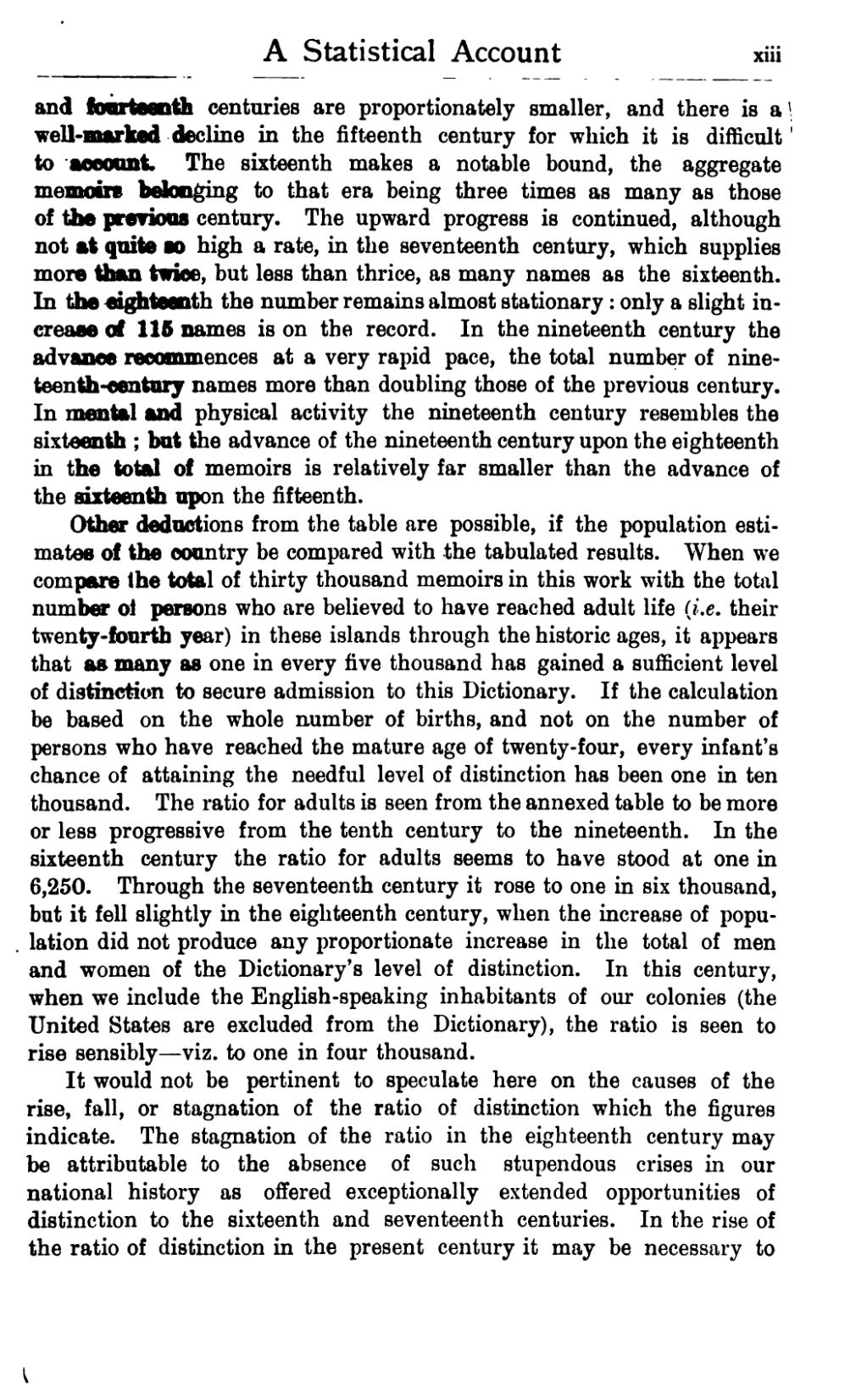and fourteenth centuries are proportionately smaller, and there is a well-marked decline in the fifteenth century for which it is difficult to account. The sixteenth makes a notable bound, the aggregate memoirs belonging to that era being three times as many as those of the previous century. The upward progress is continued, although not at quite so high a rate, in the seventeenth century, which supplies more than twice, but less than thrice, as many names as the sixteenth. In the eighteenth the number remains almost stationary: only a slight increase of 115 names is on the record. In the nineteenth century the advance recommences at a very rapid pace, the total number of nineteenth-century names more than doubling those of the previous century. In mental and physical activity the nineteenth century resembles the sixteenth; but the advance of the nineteenth century upon the eighteenth in the total of memoirs is relatively far smaller than the advance of the sixteenth upon the fifteenth.
Other deductions from the table are possible, if the population estimates of the country be compared with the tabulated results. When we compare the total of thirty thousand memoirs in this work with the total number of persons who are believed to have reached adult life (i.e. their twenty-fourth year) in these islands through the historic ages, it appears that as many as one in every five thousand has gained a sufficient level of distinction to secure admission to this Dictionary. If the calculation be based on the whole number of births, and not on the number of persons who have reached the mature age of twenty-four, every infant's chance of attaining the needful level of distinction has been one in ten thousand. The ratio for adults is seen from the annexed table to be more or less progressive from the tenth century to the nineteenth. In the sixteenth century the ratio for adults seems to have stood at one in 6,250. Through the seventeenth century it rose to one in six thousand, but it fell slightly in the eighteenth century, when the increase of population did not produce any proportionate increase in the total of men and women of the Dictionary's level of distinction. In this century, when we include the English-speaking inhabitants of our colonies (the United States are excluded from the Dictionary), the ratio is seen to rise sensibly — viz. to one in four thousand.
It would not be pertinent to speculate here on the causes of the rise, fall, or stagnation of the ratio of distinction which the figures indicate. The stagnation of the ratio in the eighteenth century may be attributable to the absence of such stupendous crises in our national history as offered exceptionally extended opportunities of distinction to the sixteenth and seventeenth centuries. In the rise of the ratio of distinction in the present century it may be necessary to
